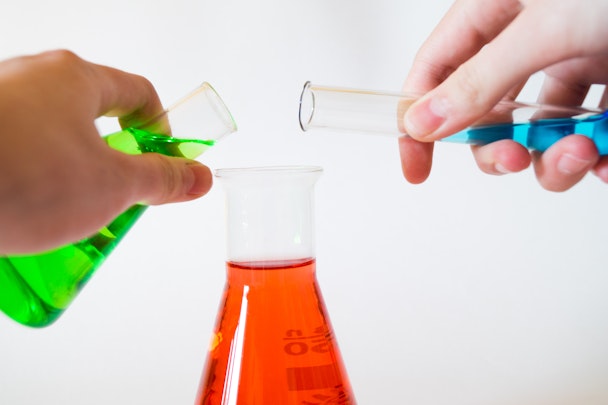For small agencies, chemistry sessions offer a chance to shine in new business pitches
The two-way assessment of mutual attraction is an important piece of the pitching process – for both the brand and the agency. And as Hero Collective’s Joe Anthony tells us, it can let smaller players stand out.

The chemistry stage of any pitch can help / Unsplash
It’s either there or it isn’t. Business relationships, just like friendships and campfires, need a spark to get going. Without the right amount of personal and organizational attraction, a client-agency pairing won’t go anywhere.
This is where the chemistry stage comes in. While some advertisers choose to blend their initial invitation with the chemistry phase, most use it as a secondary filter – to see which of the agencies that passed the first checkpoint are worth considering in the long run.
It’s also a stage during which canny agency folk can stand out and make their ideas, charm and intelligence count as much as the cold facts of their business.
Advertisement
According to Joe Anthony, founder of US indie agency Hero Collective, chemistry stages can last several days, a couple of hours, or anywhere in between. Since the pandemic normalized remote meetings, however, he says the phase has become increasingly streamlined – especially among small-to-medium-sized businesses that make up the majority of his agency’s client roster (and the economy at large).
Though most chemistry meetings are done remotely, he says agencies and brands still host face-to-face sessions. “We partnered with Dentsu last year to pitch for the Nike AOR media RFP; Dentsu brought us in as their cultural experts. We traveled to Portland to do our live presentation and Nike came to our offices in New York for the chemistry session.
“For us, it has varied from an hour and a half session on Zoom to a couple of hours in person in casual interaction to structured presentations around ideologies and test questions.”
Advertisement
Chemistry is an important stage of the pitching process. Some brands make a decision on which agency to appoint without needing to go any further, while for others it’s a crucial test of how well different teams can potentially work together – or whether personal dynamics make a partnership unviable.
But this isn’t just about soft skills. Anthony says the chemistry stage often comes with additional requests for information on an agency’s capabilities and, sometimes, a test.
“I’ve had a scenario recently with a spirits company, where it wanted my perspective on the future of tequila and mezcal – on my thoughts on how they were being adopted and on the cultural opportunities to present mezcal to specific audiences.”
Suggested newsletters for you
Anthony says that agencies don’t have to be passengers in this process. He recommends: “Make sessions more interactive, more like a collaborative idea jam where you put out prompt questions to try to provoke the client. It shows the way you think and pressure-tests their own briefs.”
As the leader of a small boutique agency, he has found success by using the chemistry stage to emphasize his personal story – and the philosophy of his wider team.
“People buy into your story as much as they buy into your company’s capabilities and services. And as services become more and more commoditized, it’s your unique perspective that people are really buying into.
“I try to tell my story as a person of color, as someone who is a self-made individual who has found a way to carve out a place for himself in an industry that’s really hard to get into unless you’re one of the good ol’ boys – and share the tactics, strategies and creative ways that I’ve scaled the business. And I use that to create greater empathy and connectivity.”
Anthony is typically accompanied by Hero’s strategy lead, executive creative director and other digital execs. On smaller accounts, the agency will pull in its more junior members of staff so that they can gain experience in the new business arena.
“It’s hard for us to be in multiple places at once. If we’re running concurrent pitches, at some point you’ve got to throw people in at the deep end in order to subsidize your time. But we’ll cherry-pick the ones that we think have the greatest implications and put our best and brightest on those and let our more junior or mid-level folks come and run the smaller pitches.”
Once a session is over, it’s up to a brand to go away and decide which agencies it wants to continue speaking to. Anthony notes that although “you have to let the dog wag the tail,” there are ways to remain front of mind after the day’s done.
“It’s out of sight, out of mind, so we find ways to stay relevant and engaging within the guardrails of what’s allowed. If there are opportunities to follow up directly, or they have established an open line of communication, we’ll send them think pieces or white papers or, you know, ask more questions. They’ll get our newsletter and read our thought leadership.”
We’re exploring how agencies across the sector are reimagining their approach to pitching – check out the rest of the series to discover how Creature has adapted the way it responds to RFIs and how Total Media vets potential clients.

